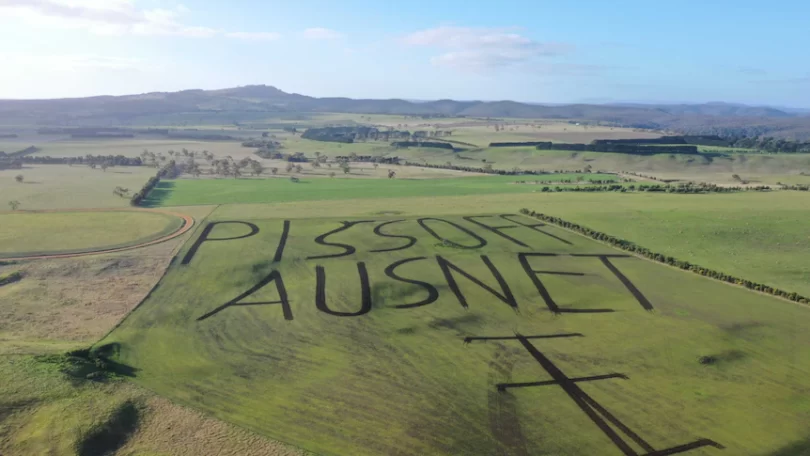[ad_1]
Electrical transmission company AusNet Services has announced the proposed route of its controversial power line through western Victoria, devastating some of the farmers impacted.
Key points:
- AusNet Services has released the proposed route of its high voltage transmission line through western Victoria
- The transmission company said 240 landholders will be affected if the project is approved
- AusNet said the power lines cannot be built underground
The 190 kilometre transmission line would stretch from Sydenham in Melbourne’s north west, to Bulgana near Stawell in western Victoria.
AusNet said the high voltage power lines cannot be built underground because that would require significant soil and vegetation removal and would disturb Aboriginal cultural heritage sites.
The company also said burying the transmission line would cost 16 times more than stringing the wires overhead.
But there are three locations along the proposed route where Aboriginal cultural heritage and other significant sites could be affected at Hepburn Lagoon, Darley and Melton Aerodrome.
More than 200 properties affected
AusNet Services said the proposed route would go through 240 private properties.
“Sharing the proposed route now will ensure much-needed clarity for around 220 of the 460 landholders that were within the single corridor,” AusNet Services Western Victoria Transmission Network project director Stephanie McGregor said.
“They now have the confirmation that their property is not on the proposed route.”
The project will now go through an Environmental Effects Statement (EES) process for final consideration by the Victorian Government.
Shaun Cleary is building his “dream home” on his fifth generation farm in Smeaton, north of Ballarat, and he said he was questioning if his family will ever live in it due to the proximity to the powerlines.
“The house is due to be finished in January, it’s supposed to be the happiest time of our lives to have a home in the country for our kids.”
“But I don’t know what we’re going to do, I don’t think we’re going to be able to live in this house now.”
Mr Cleary said he was uncomfortable bringing his young children up under the powerlines, which could be 85 meters high and up to 500 kilovolts.
“It’s not only our house that is affected, there is at least 50 to 100 that are way to close [to the powerlines].”
“AusNet are well aware that we’re building a house, but it’s really made no difference unfortunately.
Undergrounding unfeasible
Katherine Myers’ family runs an irrigated seed potato farm in neighbouring region Tourello.
“The corridor ducks through the northern tip of our farm, and then it goes smack-bang through the middle of our out paddock,” Ms Myers said.
“There will be one easement through the main property and there will be a wider easement through the out paddock of probably about a kilometre.”
Preliminary findings of AusNet’s investigation into undergrounding the transmission line has found that it would require significant soil and vegetation removal and disturbance of Aboriginal cultural heritage.
The company said going underground would “limit opportunities for future renewable development, not meet the technical availability and reliability requirements of the electricity system, and cost approximately 16 times more”.
[ad_2]
Source link








